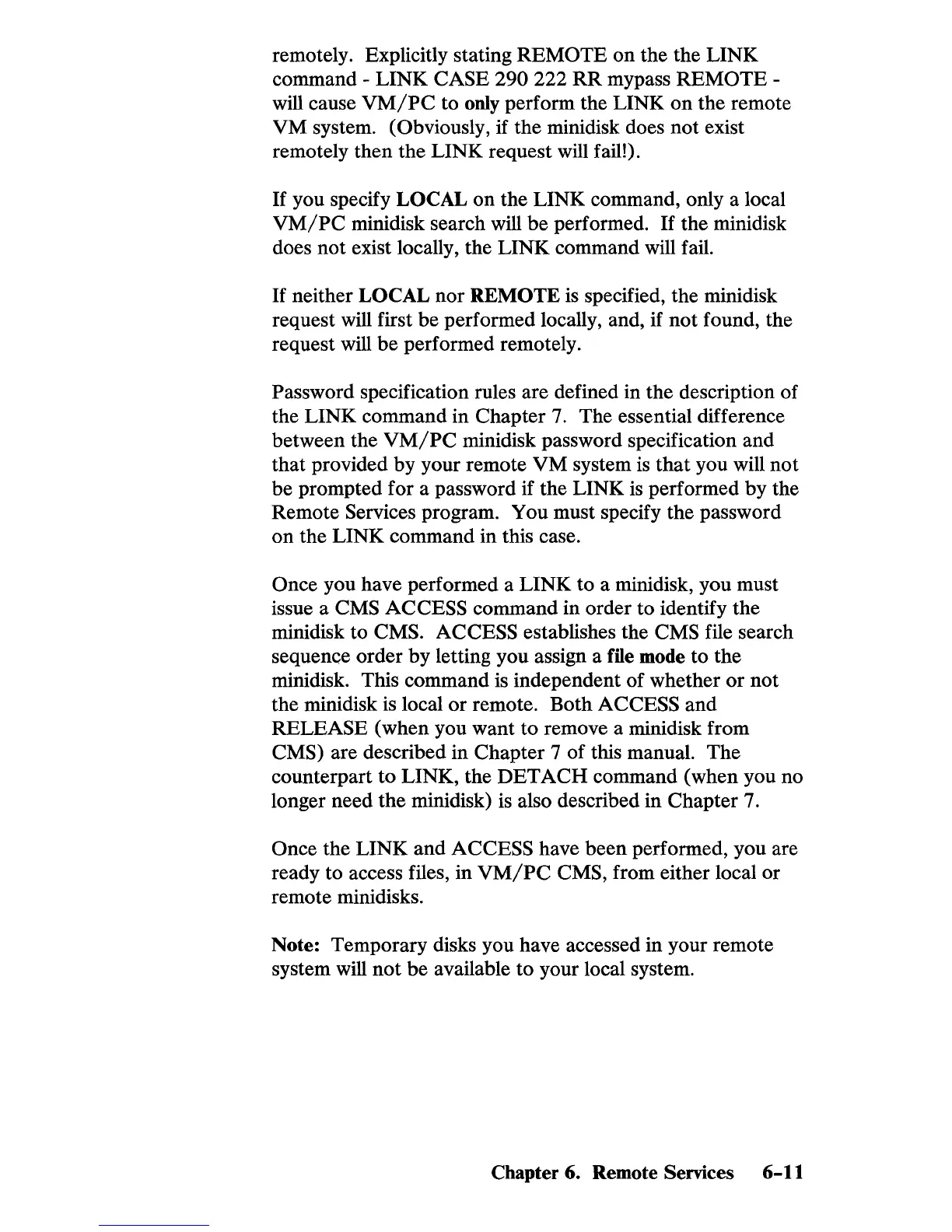remotely. Explicitly stating REMOTE on the the LINK
command - LINK CASE
290 222
RR
mypass
REMOTE
-
will cause
VM/PC
to only perform the LINK
on
the remote
VM system.
(Obviously, if the minidisk does not exist
remotely then the LINK request will
fai1!).
If
you specify LOCAL on the LINK command, only a local
VM/PC
minidisk search will
be
performed.
If
the minidisk
does not exist locally, the LINK command will fail.
If
neither LOCAL nor REMOTE is specified, the minidisk
request will first be performed locally, and, if not found, the
request will
be
performed remotely.
Password specification rules are defined in the description of
the LINK command in Chapter
7.
The essential difference
between the
VM/PC
minidisk password specification and
that provided by your remote
VM
system
is
that
you will not
be prompted for a password if the LINK
is
performed by the
Remote Services program. You must specify the password
on the LINK command in this case.
Once you have performed a LINK to a minidisk, you must
issue a CMS ACCESS command in order to identify the
minidisk to CMS. ACCESS establishes the CMS file search
sequence order by letting you assign a
file mode to the
minidisk. This command is independent of whether
or
not
the minidisk
is
local
or
remote. Both ACCESS and
RELEASE (when you want to remove a minidisk from
CMS) are described in Chapter 7 of this manual. The
counterpart
to
LINK, the
DETACH
command (when you no
longer need the minidisk)
is
also described in Chapter
7.
Once the LINK and ACCESS have been performed, you are
ready to access files, in
VM/PC
CMS, from either local or
remote minidisks.
Note: Temporary disks you have accessed in your remote
system will
not
be available
to
your local system.
Chapter 6. Remote Services 6-11

